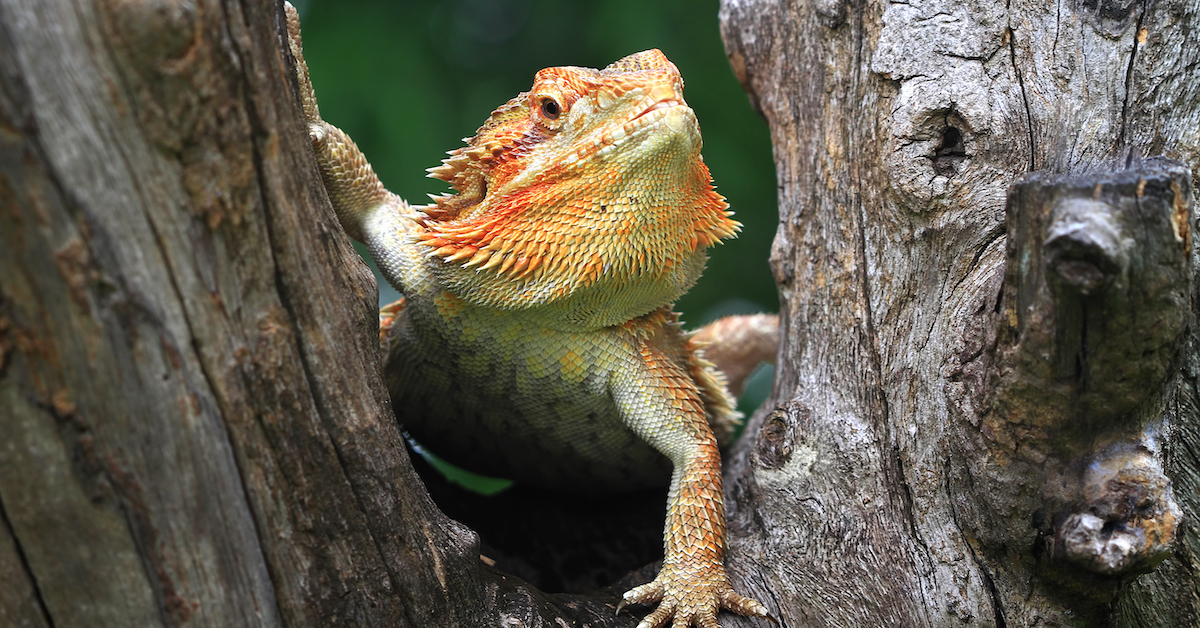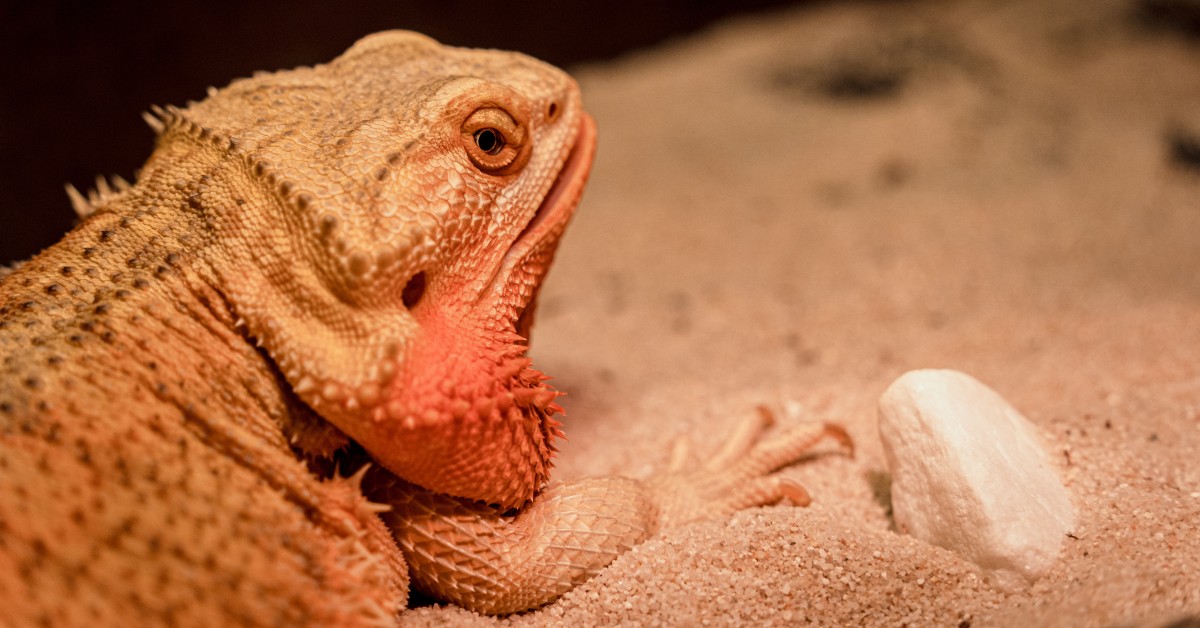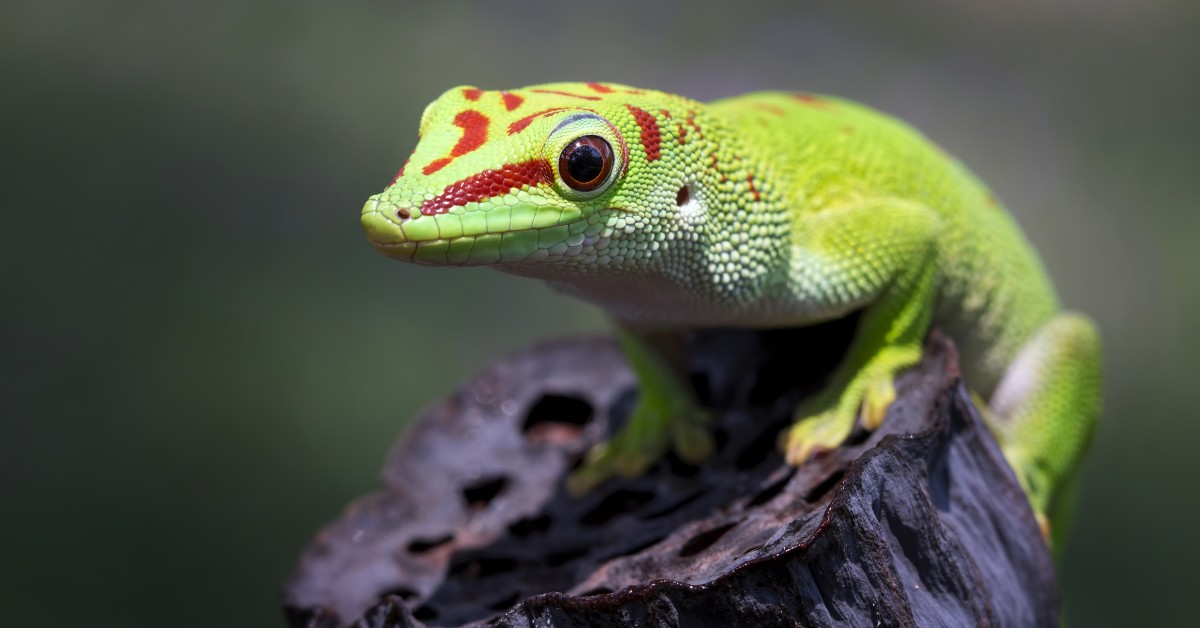What Types of Reptiles Make the Best Pets?
Reptiles like leopard geckos and bearded dragons make great pets for beginners as they are small and easy to care for.

While cats and dogs make incredible pets, they are not right for everyone. If you prefer scales over fur, then a reptile may be the pet for you. Reptiles can be found in many different species, sizes, shapes, and colors. From geckos and bearded dragons to tortoises and snakes, each one is unique in its own way. Before making your choice, consider the different types of reptiles and which make the best pets.
7 Best Reptiles to Keep as Pets
1. Leopard Geckos
Leopard geckos are small, brightly-colored lizards that are fairly inexpensive and have minimal care requirements. These great starter pets are quiet, don’t smell, and are available in a wide array of colors and patterns.
Housing requirements for leopard geckos are minimal. You’ll need an aquarium or terrarium with a screen top to prevent your pet from escaping. As a general rule of thumb, you’ll want 10 gallons per gecko.
The habitat will also require other items, such as a UVB light, heat pad, hide box, substrate to cover the bottom of the cage, a calcium bowl, and a food and water bowl. Leopard geckos usually feast on crickets, mealworms, and wax worms.
2. Corn Snakes
Corn snakes, also referred to as rat snakes, are one of the most popular types of snakes kept as pets. These snakes are relatively docile and easy to care for, making them a great snake option for beginners.
The average corn snake grows to between two and four feet and has a life expectancy of 15 to 20 years. Corn snakes require a tank size of at least 30 gallons with a substrate that only needs to be changed about once a month. In addition, young corn snakes only need to be fed defrosted food about once a week and adults about every two weeks.
3. Bearded Dragons
Bearded dragons are quickly becoming one of the most popular reptiles to keep as pets. Their ease of care, passive nature and longevity make them amazing critters that attract both beginners and experienced reptile keepers.
The most difficult hurdle when keeping a bearded dragon as a pet is getting the environment right. Bearded dragons require the right UVB and temperature exposure, as well as a proper diet, ample hydration, and a clean habitat.
Due to their size, bearded dragons can be comfortably handled by younger children but are still small enough to be kept in a standard aquarium. They occasionally enjoy human interaction but are usually happy in their aquarium basking under a heat lamp.
4. Tortoises
Tortoises can make cute, quiet, and low-maintenance pets. They also live for a long time, with a lifespan ranging from 50 to 100 years or more. This means that you should be prepared to care for your critter for a lifetime and know that your pet may outlive you.
Many tortoise species are large and require a decent-sized enclosure, usually outdoors. Living in a mild climate is ideal unless you plan on bringing your pet indoors at night or during cooler weather. Tortoises consume a variety of roughage and require the proper amount of calcium and phosphorus in their diet.
5. Anoles
Anoles can grow to be about 8 inches long and live an average of five years. This unique species of lizard enjoys living on trees in the wild, is very fast, and does not like to be handled much.
You may find that your anole changes color depending on temperature, its environment, and even its mood. Like many other lizards, they require a terrarium, substrate, lighting, and a heating element for proper temperature and humidity.
Anoles require a balanced diet that includes gut-loaded insects, multivitamins, a dusting of calcium reptile supplement two to three times per week, and treats like mealworms, hornworms, and phoenix worms.
6. Ball Pythons
If you’re interested in a slightly larger snake that is suitable for beginners, consider a ball python. These snakes can grow up to 5 feet long but are not as large as many other constricting snakes. Ball pythons are easy to handle and have a life expectancy of around 20 to 30 years, although some can live upwards of 50 years or more.
The ball python is not a very active snake, making a 30-gallon enclosure a suitable option. They require a substrate like newspaper or shredded bark, as well as some sturdy branches and a dark place to hide.
Ball pythons require a temperature of between 75- and 80 degrees Fahrenheit on the “cool” side of the tank and a basking spot with a temperature of between 88 and 92 degrees.
7. Water Dragons
Water dragons are a popular pet with Chinese water dragons being one of the most common. These dragons are native to China and Southeast Asia and are known for their friendly disposition and skilled climbing.
You’ll find Chinese water dragons ranging from light to dark green. Some have stripes of green or turquoise on their bodies with pale yellow or white bellies. They are fairly small in size with females growing to about 2 feet and males reaching 3 feet in length.
Water dragons require large enclosures of about 5 to 6 feet long and 2 to 3 feet deep. Their habitat should include a substrate, plenty of branches, and live plants like pothos, ficus, or dracaena.
Keeping a Reptile as a Pet
If you’re on the hunt for a new pet, you may be looking at reptiles. Many types of reptiles make incredible pets but not all are right for beginners. Do plenty of research and take time to prepare as your new pet will be a long-term commitment.
Ready to start saving money on pet wellness care?
Then take a look at Mint Wellness, the pet wellness plan that provides fast reimbursement on routine pet care. Save on vaccinations, wellness exams, preventatives, dental, and more!
Learn More


